I. In-Ground
Graves
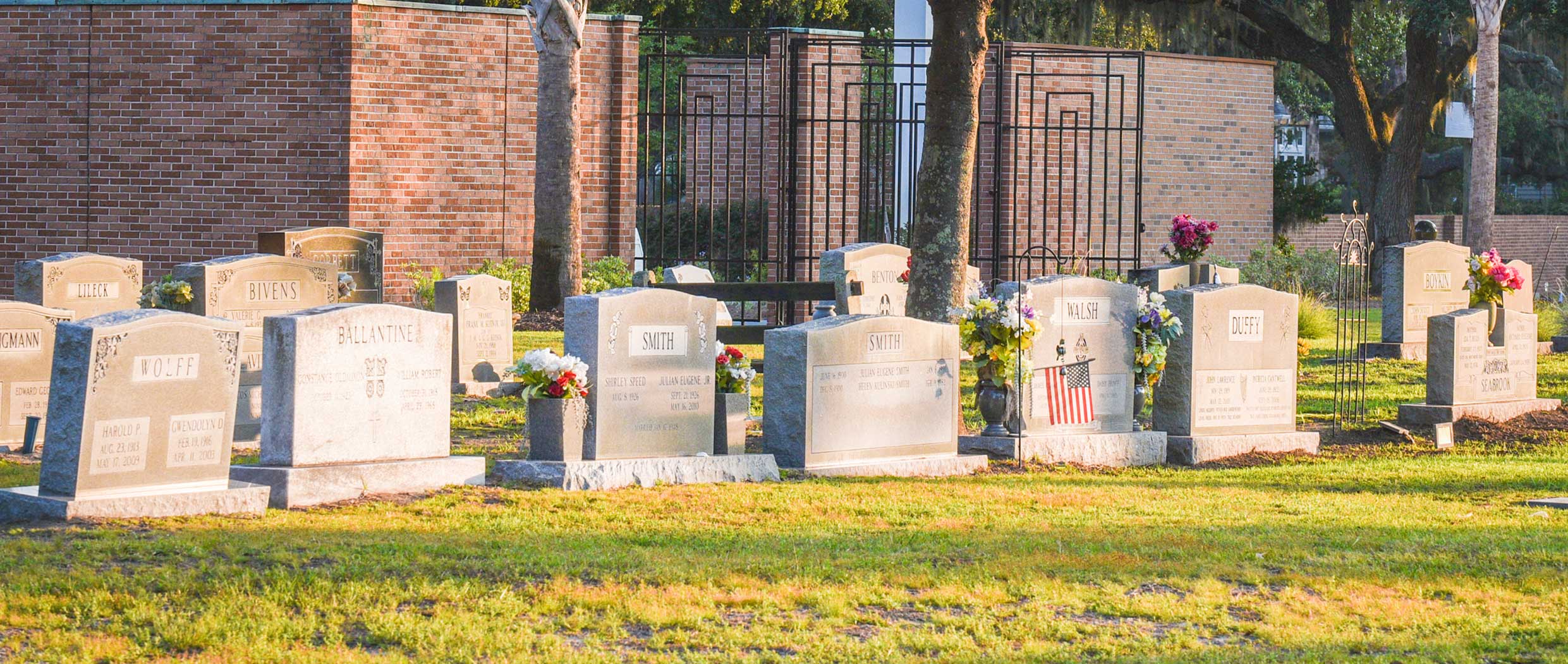
Interment in the ground in a grave remains the most widely used form of burial. Graves are generally of two types, either permitting a lawn level (flat) marker, or permitting an upright family monument. Sections 3 and 4 in Holy Cross Cemetery are our “Flat” sections. They offer the most affordable cost per grave but are limited to flat markers. Graves may accommodated both full-body, casket burial and burial of the cremated remains of the body. Smaller, cremation only graves are also available in our Holy Cross Cemetery, the most popular of which are in our St. Nicholas Garden where you or your loved one may be buried among the flowers or stepping stone pathway.
Graves may be purchased in single quantities in both the flat and upright monument sections with the exception of Section 7. Section 7 requires the purchase of graves in pairs with a minimum purchase of 2 graves. Graves in Section 7 have a larger minimum monument size requirement.
Each grave is sold for the use of one person. An Additional Right of Interment may be purchased which would allow a second cremation burial. The maximum number of burials in a grave (excluding cremation only graves), with the purchase of an Additional Right of Interment, are as follows:
- One full-body, casket burial and one urn burial of the cremated remains
- One full-body casket burial and one infant burial
- Two cremated remains burials
Future care of all graves is included in the purchase price.
II. Above-Ground
Crypts
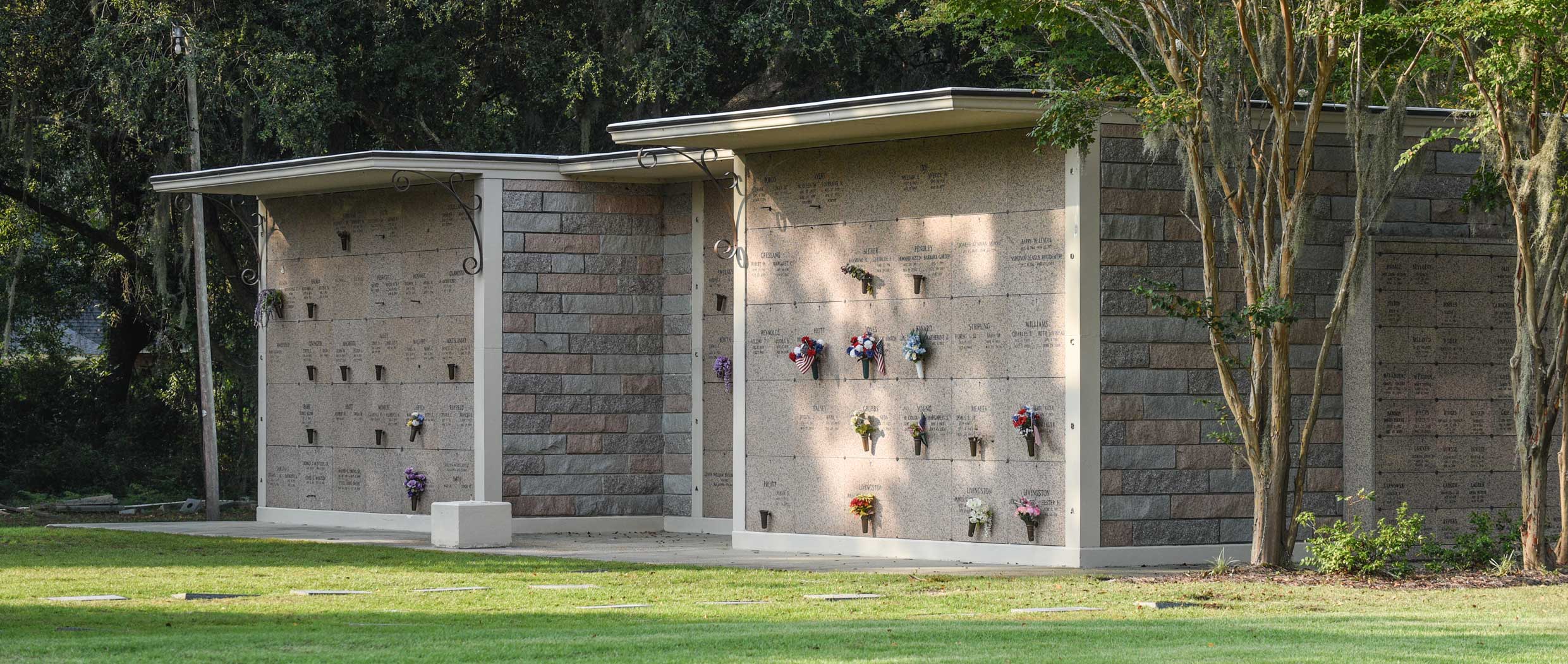
Crypts are available for above ground burial of the full body in a casket. A crypt is found in a mausoleum and does not permit the use of vaults but does require the embalming of the body. Crypt burial is among the oldest forms of burial. In fact, the first mausoleum was built in 353 BC for King Mausolus, from whose name the word “mausoleum” was derived. Scripture tells us, that Joseph of Arimathea “went to Pilate and asked for the body of Jesus. He then took it down, wrapped it in a shroud and put him in a tomb which was hewn in stone in which no one had yet been laid” (Luke 23:52-54). Throughout the Church’s history, mausoleum-style entombment has been utilized. Early Christians were buried in the catacombs. In older churchyard cemeteries private mausoleums can be found, but because of their costs they were available only to the affluent.
Today, Community Garden Crypt facilities make above ground burial affordable for persons who have a preference for this type of burial. Depending on the type of memorial selected for ground burial or the type of outer burial container purchased, crypt burial can often be comparable in cost to grave burial. Personal and family “private” mausoleums are available for purchase and placement in select areas of our Diocesan operated cemeteries.
Niche
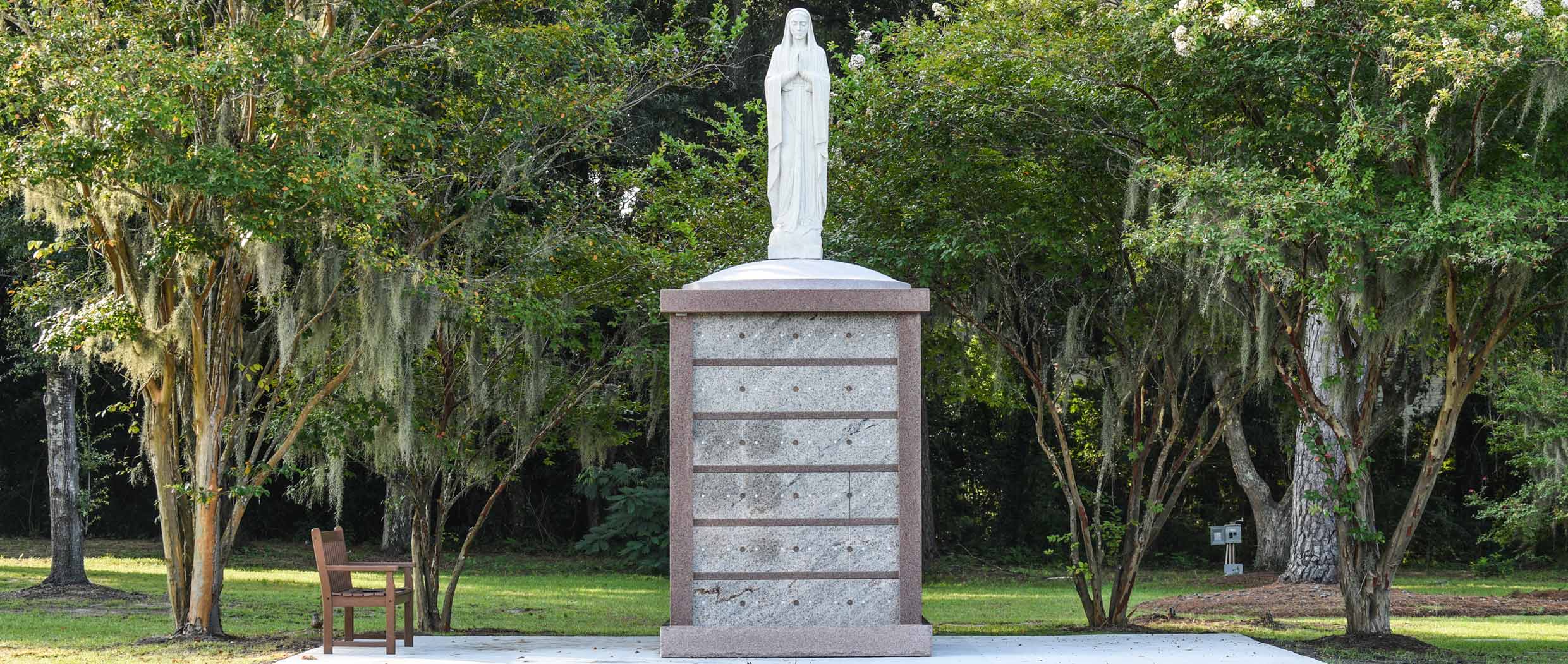
A niche is found in either a mausoleum (with full body burial adjacent) or in a free standing columbarium and is for the inurnment of the cremated remains of the body. In the summer of 2019, Holy Cross Cemetery added three new columbariums appropriately named: Jesus, Our Savior; Mary, Our Mother; and St. Joseph. The columbariums are both beautiful and affordable. Constructed of 100% granite, each contains 84 niches. Each niche is sold as “all-inclusive,” meaning the space (niche), opening and closing services, family tent and chairs set up, and memorialization with a bronze plaque are included in the cost. Spaces are priced comparable to others for one person but may, if you wish, accommodate up to two people. Reasonable urn size and memorialization restrictions do apply.
Cremation may be a confusing issue for Catholics because at one time, the church prohibited cremation; this is no longer the case. In 1963, the Catholic Church lifted its prohibition forbidding Catholics to choose cremation. To help you better understand cremation burial, we have provided some answers to the most commonly asked questions and we hope this will be helpful in making your decision.
Click below for a list of columbariums at parishes across the state.
Cremation Gardens
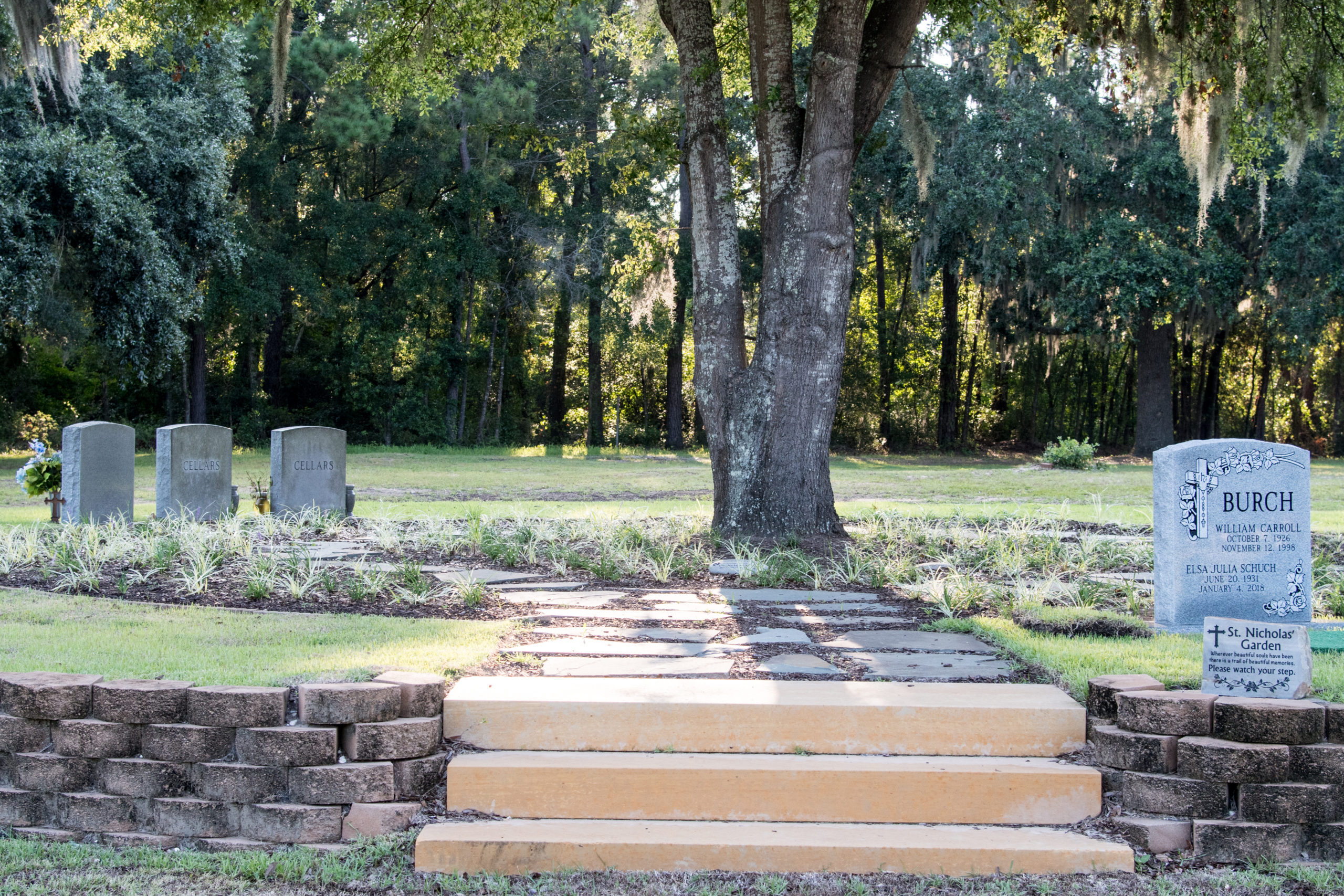
Our Holy Cross Cemetery offers unique cremation only burial options in the St. Nicholas Cremation Garden. This cremation garden is located under a lovely tree, in a raised garden bed with both grass areas and a large central flower garden. A dedicated irrigation system ensures the continuous beauty of this garden.
Several types of cremation burial are available in the St. Nicholas Cremation Garden:
- In-ground burial of husband and wife with a shared upright monument
- In-ground burial of an individual amongst flowers and marked with a simple river rock marker
- Above-ground burial of an individual in a unique granite vessel that both memorials the individual and safely houses their cremated remains inside the monument
FAQ
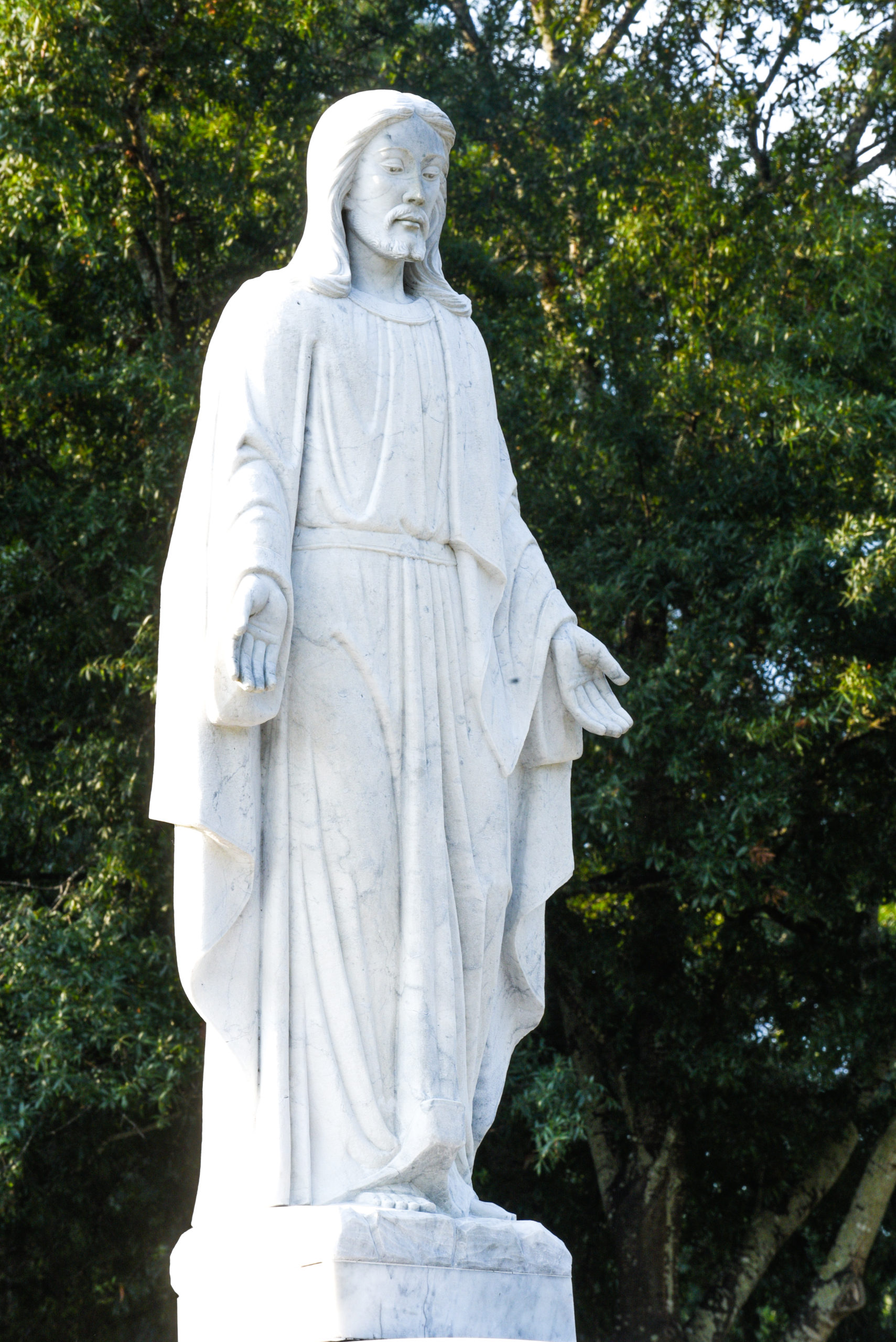
The cremated remains of the body should be buried or entombed. The scattering of the cremated remains of the body, or the keeping of them at home, or the dividing of them among various family members is not the reverent disposition the church requires.
Most Catholic cemeteries have grave space or crypt space or niches for the cremated remains of the body. This allows for visitation, memorialization and prayers.
At the cemetery, a final prayer “The Rite of Committal,” is prayed as the cremated remains of the body are laid to rest.
Recognizing that the goal of our lives is eternal life with God, we prepare for that by prayer, reception of the sacraments and care for those around us. Preparation for death is an essential part of life for a Christian.
In today’s society, for some, choosing cremation is part of that preparation for death. The Church continues to prefer and encourage the faithful to bury or entomb the bodies of their departed loved ones. However, if cremation is chosen for worthy motives, the church wishes to support the faithful in honoring the life and memory of the departed.
Prior to cremation, arrangements should be made among the family of the deceased, the crematorium, the funeral director and the cemetery concerning the disposition of the cremated remains of the body.
Most crematoriums will ship the cremated remains of the body via registered mail, or some other secure service, to the person who is responsible for them.
Upon receipt, the cremated remains of the body should be treated with respect in the way they are handled, transported, cared for and in their final disposition.
The same rights as those afforded to Catholics choosing full body burial. See above.
The church strongly prefers that cremation takes place after the full Funeral Liturgy where the body is present. “This is the body once washed in baptism, anointed with the oil of salvation, and fed with the bread of life.” The Church’s belief in the sacredness of life and the resurrection of the dead encourages us to celebrate the funeral liturgies with the body present while affirming the value of human life. As Catholics we celebrate our funeral liturgies, because they recall Christ’s victory over death. With His victory, comes our promise of eternal life.
If it is not possible for the body to be present at the Funeral Mass, permission has been granted by the Catholic Church which provides for the celebration of the Funeral Mass with the cremated remains of the body present in church. Since it is the ‘earthly remains’ and not the body of the deceased that is present, there are slight adaptations in the liturgy. In some diocese, local permission is needed for the cremated remains of the body to be present at Mass.
What we commonly call “ashes” are really not ash as we know it, but bone particles. The proper terminology of the remains of the body after cremation is cremated remains of the body. The Church also holds that these remains be treated with the same respect that the body was treated with prior to cremation, including the use of a “worthy vessel” or urn for the cremated remains of the body.
Cremation is the process where the body is totally incinerated by intense heat and flame. All substances are consumed and vaporized except bone fragments and any noncombustible materials. The bone fragments may be further pulverized after cooling. These remains weigh anywhere from 4 to 10 pounds.
Catholics believe that we are created in the image and likeness of God, and that all of God’s creation is sacred. Just as the body should be treated with respect in life, so should it be treated in death. As Catholics we believe that “in baptism the body was marked with the seal of the Trinity and became the temple of the Holy Spirit,” and as such, “Christians respect and honor the bodies of the dead and the places they rest” (OCF 19). During life our body was baptized into the Lord and His promise of eternal life.
From the earliest days of Christianity, cremation was seen as a pagan ritual perceived to be contrary to this and other Catholic teachings, and therefore prohibited by the Catholic Church.
Today, cremation is only prohibited if the person choosing cremation is doing so to deny Christian teachings, especially that of the resurrection of the dead and the immortality of the soul.
In 1963, the Catholic Church lifted its prohibition forbidding Catholics to choose cremation. Canon 1176 of the 1983 Code of Canon Law states, “The Church earnestly recommends the pious custom of burying the bodies of the dead be observed, it does not however, forbid cremation unless it has been chosen for reasons which are contrary to Christian teaching.”
Cremation may be a confusing issue for Catholics. At one time, the church prohibited cremation but this is no longer the case. We’ve provided some answers to the most commonly asked questions and we hope this will be helpful in making your decision.
The Order of Christian Funerals presents the Church’s plan for the celebration of the death of one the faithful. These rites assume the presence of the body, but adaptations are available for those choosing cremation. The Order of Christian Funerals consists of three parts:
- Vigil and Related Rites and Prayers
- The Funeral Liturgy and
- The Rite of Committal
The “Vigil and Related Rites and Prayers” gives family and friends an opportunity to gather in the presence of the deceased and offer support and prayers to and for each other as well as the deceased, and recall their Christian life. The “Funeral Liturgy”, frequently celebrated within Mass, but which may be celebrated outside of Mass, allows us to relive the Easter mystery and Christ’s promise of eternal life. The “Rite of Committal” is our farewell to our beloved brother or sister in Christ. At this time we turn over the care of our loved one to the cemetery as we await the resurrection of the dead along with the Communion of Saints.
When we are baptized our bodies are marked by the seal of the Holy Trinity. In accordance with this belief, we respect and honor the bodies of the dead and the places where they rest.
The preparation of the body of the deceased is always marked with dignity and reverence and never with the despair of those who have no hope. Therefore, in the presence of the deceased we turn to prayer. In our time of sorrow it is through prayer that we receive the necessary grace and consoling assurances of our faith.
As more families choose cremation a person may choose from several options:
- Inurnment above-ground in a niche in a mausoleum or columbarium as described above
- Burial in the ground in a traditional burial space
- Burial in the ground in a smaller, cremation-only burial space
- Burial in the ground in an eco-friendly Cremation Garden with landscaping and irrigation
- Burial in the ground in a traditional burial space already occupied by a loved one either as a casket burial or as a cremation burial. Burial in a single grave with a loved one requires an Additional Right of Interment and affords a cost savings when compared to the purchase of a separate burial space.

